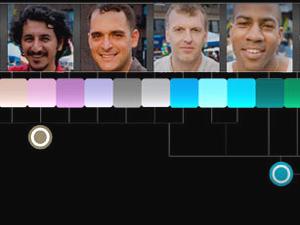Tracing genetic genealogy on a global scale
(Image: National Geographic Genographic Project)
The following is a partial transcript; for full story, listen to audio.
Where did we come from? Evolutionary biologist Spencer Wells is pretty close to the answer. He’s the National Geographic “Explorer-in-Residence” and heads an initiative called the Genographic Project. By collecting DNA samples from people around the world, he’s tracing the paths of human migration, and he’s uncovered some startling facts about homo sapi.
The Genographic Project, he says, tries to answer the basic questions that most people have: “We look around, we see people who seem so different to each other and from ourselves. Do we share a common origin? And how recently was that if we do? If we do spring from a common source, how did we populate every corner of the globe?”
In the process of answering these questions, Wells is also trying to understand how humans generated the patterns of diversity that we see today.
Wells says that according to the fossil record, humans originated in Ethiopia about 200,000 years ago.
“And according to the genetic data, and now as we start to analyze it more carefully, the archeological data, we don’t start to leave Africa — modern humans — until around 50,000 – 60,000 years ago. So we spent three quarters of our history as a species, living only in Africa.”
Surprisingly, humans almost became extinct 70,000 years ago. “And there were no more than a couple thousand people alive at that time, and only in Africa,” says Wells.
“And so we’ve spread around the world and in the process generated that diversity relatively quickly … and of course what has governed the generation of that diversity are all of Darwin’s evolutionary forces.”
In addition to Darwin’s evolutionary forces — natural selection and adaptation — there was also what Wells refers to as “random genetic drift.”
“Changes in gene frequency that occur simply because these are small populations splitting apart. It’s like flipping a coin ten times versus a thousand; you may not get exactly 50/50.”
Natural selection combined with genetic variables meant that we modern-day humans are the end result of several different species being whittled down through generations.
“You look back in the hominid line and we’ve learned more and more over the last 10-20 years, that it’s really a bush; it’s not a straight lineage down to us in the present day. There are all these different species being tried out at various points in time, and then they become extinct.”
For more on National Geographic’s Genographic Project, visit the website.
PRI’s Peabody Award-winning “Studio 360 with Kurt Andersen” from WNYC is public radio’s smart and surprising guide to what’s happening in pop culture and the arts. Each week, Kurt Andersen introduces you to the people who are creating and shaping our culture. Life is busy — so let “Studio 360” steer you to the must-see movie this weekend, the next book for your nightstand, or the song that will change your life.
